Iceland has to be one of my favourite Nordic countries, and the capital city of Reykjavík is no exception. This relatively small country provides visitors with an eclectic Scandinavian vibe coupled with some of the most stunning geographical landscapes I’ve ever had the good fortune of marvelling at.
Iceland is widely renowned for its beautiful scenery, offering up plentiful opportunities to get out those hiking boots and hit the trails. You might already be familiar with the fact that Iceland straddles two tectonic plates, the Eurasian plate, and the North American plate — to me, it’s mind-boggling. It felt so cool to be able to jump like a hopscotching child from one plate to another, feeling as though I was reliving my school geography lessons.
If you hop back onto the North American plate, on the southwest coast, you’ll find the city of Reykjavík. Reykjavík not only provides visitors with an exciting city itinerary but can also be used as starting point for exploring the rest of Iceland’s infamous beauty.
Reykjavík has recently become an essential part of any European bucket list. There’s just something about that city… I’m not sure whether it was the fresh sea breeze, the adventurous ambience, the adorable, coloured roofs or the rumours of elves and fairies that tickled my travelling taste buds, but Reykjavík definitely hit the spot.
So, let’s dive into those glacial Icelandic waters, explore museums from the traditional to the completely absurd, nibble on some Reykjavík favourites and then finish off with a refreshing dip in a geothermal lagoon.
Please note: prices are listed in Icelandic Króna (1,000 ISK is roughly $7.90)

Marvel at Hallgrímskirkja
Before we dive into the wonders of this first Reykjavík must-see, I want to just take a moment to appreciate the difficulty that comes from attempting to pronounce all of these amazing Icelandic names.
So, let’s start with Hallgríms–kirkja — apparently it’s easier to say like that (she writes, still unable to pronounce it properly).
In most cities I’ve visited, a church trip has been on the agenda, however I can recall none that have been quite as intimidatingly impressive as Hallgrímskirkja. As I approached the outside of this impressive yet imposing church, I felt an instant chill (and not from that ocean breeze). It was eerie, like I’d been transported to a gothic version of Orwell’s 1984. An unexplainable silence seemed to linger around the place, only adding to Reykjavík’s mysterious aura.
As I walked inside the impressive structure, my eyes were instantly forced upwards towards the modern gothic arches. Somebody told me that Hallgrímskirkja was actually designed to mimic the volcanic basalt that Iceland is so famed for, and I can definitely see why.
Then suddenly, BOOM! The organ had begun; a sound so intense that it reverberated off the oddly shaped walls and through my very being. A sound that admittedly induced a low-to-moderate squeal of shock on my behalf.
If you want to be there for the organ playing, try your luck on a Thursday or Saturday between 12.00 – 12.30 p.m., and Sundays from 5 p.m. Entry to the church is free (hooray!) but if you want to venture up to the tower, you’ll need to purchase a ticket, costing 1,000 IKR. From the top you can enjoy some excellent 360° views of Reykjavík.
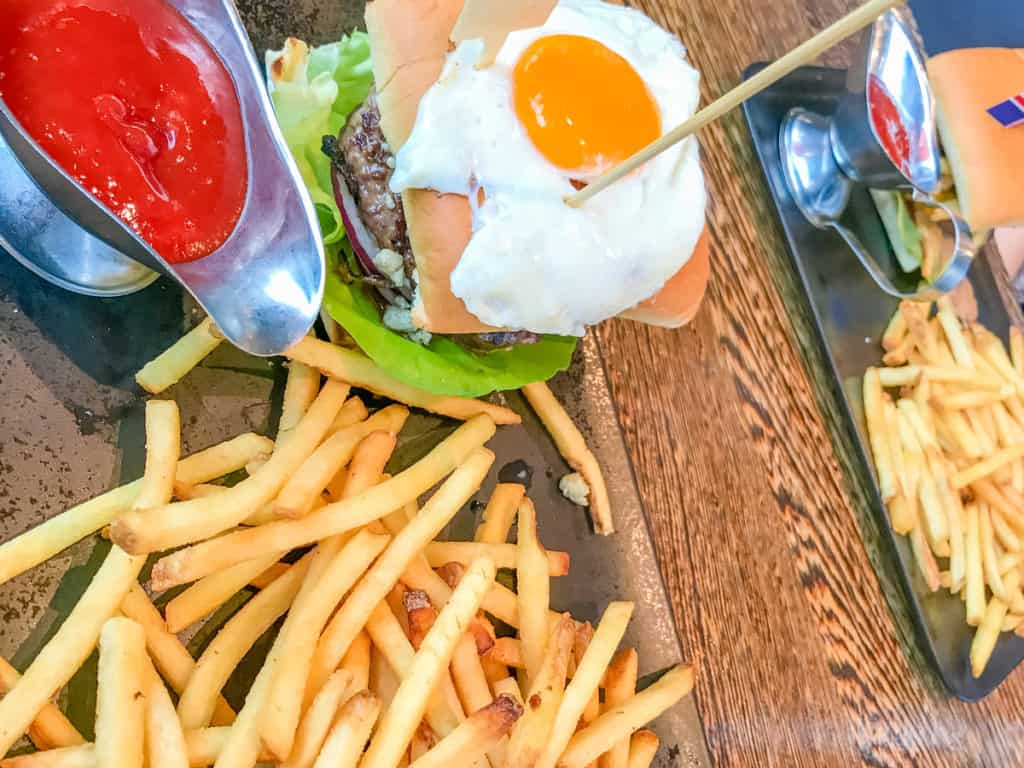
Head to Hamborgarafabrikkan
Can you imagine if all words were 19 letters long? Hamborgarafabrikkan is a — you guessed it! — hamburger restaurant, located on Höfðatorg 2 and 105 Katrínartún, very close to the coast.
Now I won’t claim that this is the best burger joint in the world, but if you pay it a visit, you’ll be eating your dinner with a hearty dollop of history.
It was in this spot, back in 1987, where President Ronald Reagan and Soviet leader Mikhail Gorbachev jointly signed the Intermediate-Range Nuclear Forces Treaty (INF), which brought about the end of the infamous 45-year Cold War. Now, maybe it was the relaxed atmosphere of Reykjavík or a good helping of fries that sealed the deal, but whatever it was, it worked, and now you can absorb the history whilst tucking into your lunch and then popping across to the next of Reykjavík’s must see places.
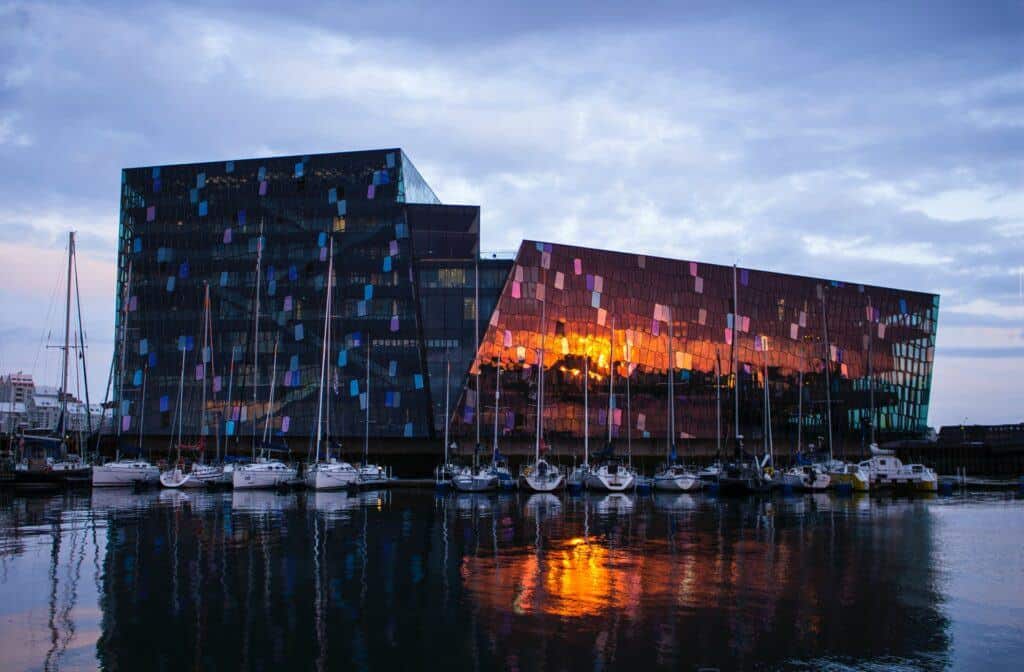
Harpa Concert Hall and the Old Harbour
Just a 20 minute walk from Hamborgarafabrikkan is the shining geometric glass building that is the Harpa Concert Hall. This impressive building is perfect to visit after some rain, or in the setting sun, for a spot of reflection photography.
Home to the Icelandic Symphony Orchestra, there are concerts and conferences held throughout the year here, so be sure to check out what’s on while you’re there. While you’re there, I recommend extending your walk a little further, over towards the old harbour.
For me, no matter where I go, there’s always something satisfying about having an evening stroll around a harbour filled with bobbing boats. If you were feeling peckish at this point, you could also grab some fish and chips and find a spot for sunset.

The Sun Voyager Statue
The Sun Voyager Statue is also located in close proximity to Hamborgarafabrikkan, so why not take a look at this skeletal sculpture?
Designed by sculptor Jón Gunnar Árnason, it bears resemblance to a Viking long boat and is a dedication to the sun. Minimalist and inherently Nordic in style, the Sun Voyager has become an iconic site of Reykjavík.
Not that my artistic advice is anything to go by, but this sculpture is, I would say, only worth visiting if you go to the Harpa Concert Hall. Viewing the sculpture obviously doesn’t take long and so I would suggest tagging it on to your day’s other activities.
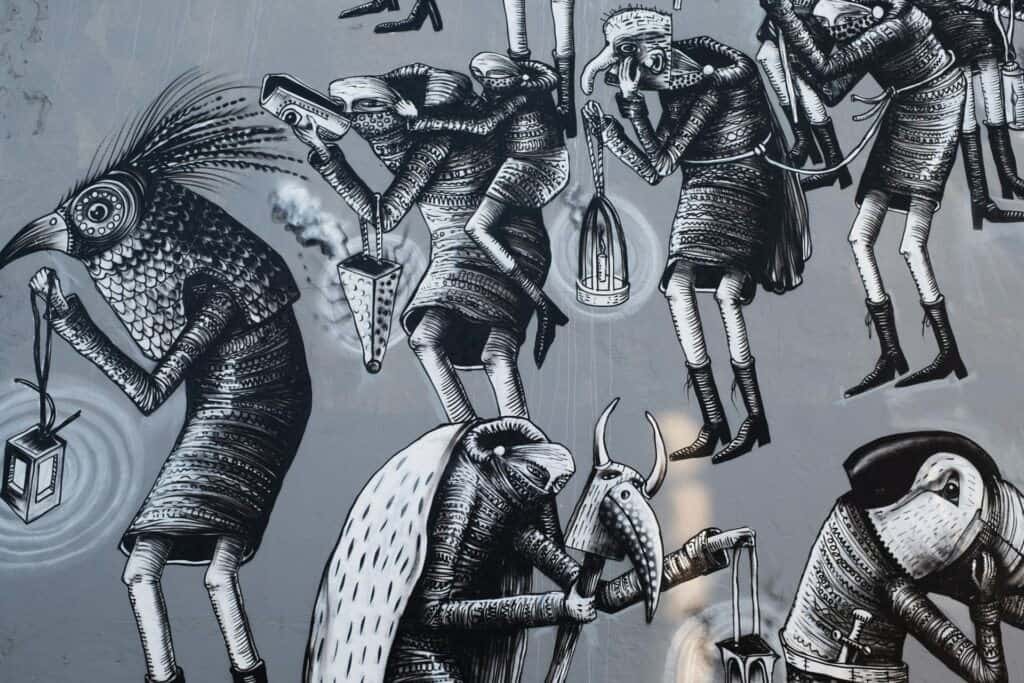
Reykjavík’s Street Art
Now, if there is street art to be had, I’ll be there. I just love it. There’s something about the roughness, impressive detail, and questionable legality surrounding street art that leaves me eager to explore. It also results in me having visions of myself dressed in a balaclava, armed with a can of spray paint and creeping around town.
Simply wandering around the city is a great way to discover Reykjavík’s somewhat illicit artistic gems, however to make things a little easier for you, here are the names of a few places you may want to be on high alert for street art: On Laugavegur street (the main shopping area), you’ll see a number of pieces, as well as Frakkastígur, Njálsgata, and Ægisgata.
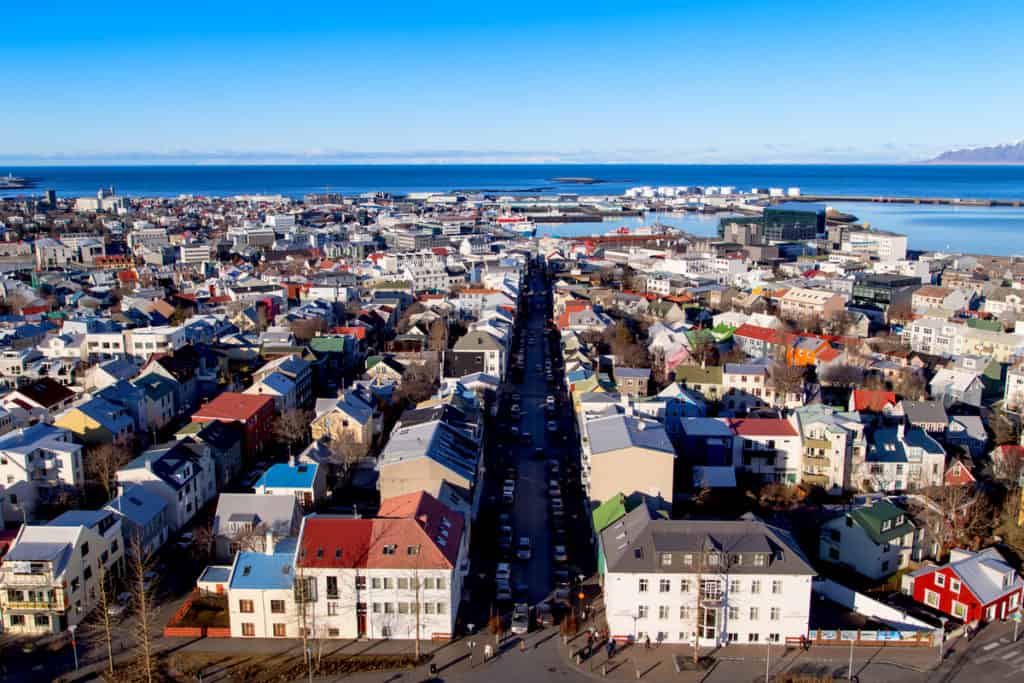
Laugavegur
Laugavegur, also known as main street, is not to be confused with the stunning Laugavegur hiking trail in Southern Iceland. Laugavegur, Reykjavík, is the main shopping street in the capital.
If you’re feeling the need for a spot of retail therapy, this is the place for you. One of the oldest streets in Reykjavík, it’s a refreshing change from sights like the ultra-modern Harpa Concert Hall or the alien-like Perlan (more on that later!). Art, fashion, homeware, restaurants, and bars: Laugavegur has the lot and is certainly a go-to place for evening entertainment.
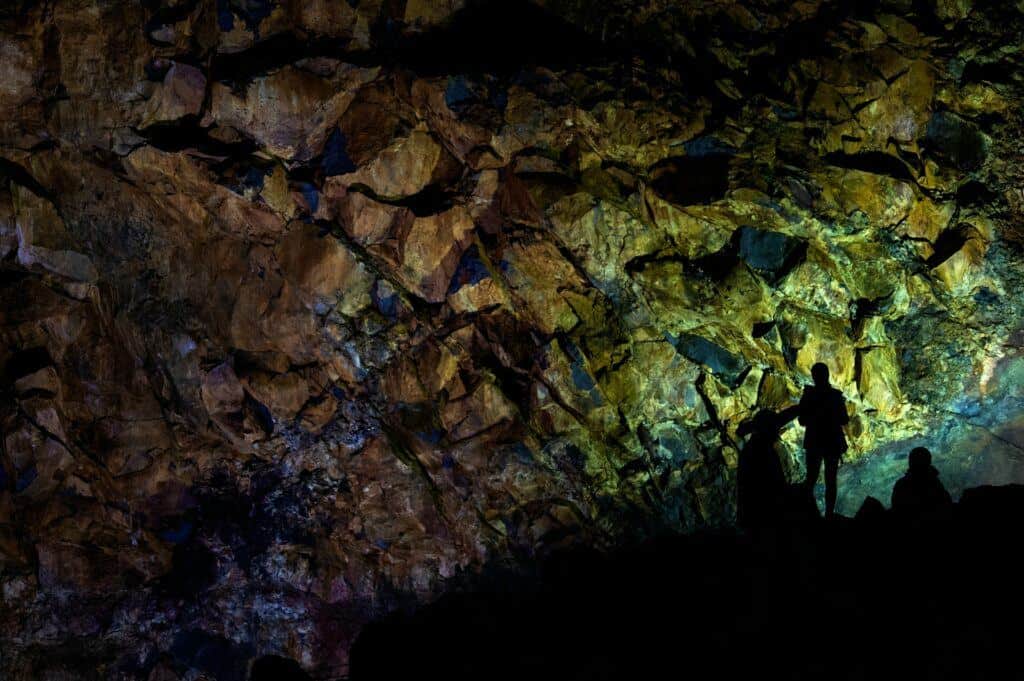
Descend Into a Dormant Volcano: Visiting Thríhnúkagígur
A trip to Reykjavík cannot, in my opinion, be considered complete without a venture outside the city for an unforgettable volcanic experience. I still look back on this memory fondly, an anecdotal gem, a real dinner party pleaser, but at the time, this trip was mostly being viewed through a veil of basaltic rock speckled with blood.
But I’m getting ahead of myself.
Located 35km outside of Reykjavík, the Thríhnúkagígur Volcano is a 213m deep dormant volcano. Admittedly from the outside, this volcano doesn’t possess the classic beauty of Mount Fuji. In fact, in comparison it looks more like a pathetic mound of rock. However, the beauty is not found on the exterior of Thríhnúkagígur, but in the magma chamber within.
When visiting Reykjavík, I can recommend no better outdoorsy trip than this one. Booked through Get Your Guide, this tour offers up a 45-minute hike (with a guide) to the mouth of the Thríhnúkagígur volcano, where you’ll then climb on to a manmade shaft that lowers you deep into the volcano’s chamber. Costing around 44,500 ISK, this trip is perhaps a little on the pricey side, but unequivocally (despite the trauma) worth every krona.
So. The trauma.
I was actually among some of the first people to do this trip, visiting just weeks after its commencement. The organisers didn’t yet know it, (stood at the small car park), but they were in for quite the experience as well. As I said, the walk to the volcano took about 45 minutes, and it was a pleasant and easy one — well apart from the terrain. That was a little, let’s say, rough around the edges. Can you see where this is going?
Ridiculously close to nearing the end of our walk, with the volcano in sight, I decided it would be a very good idea (or maybe gravity decided) to become personally acquainted with the ashy black dried lava.
I face planted.
I well and truly, and with considerable force, fell face-first on to jagged, ashy, black, dried lava.
Blood instantly began to flow from my face in the most dramatic manner and my first question was: “Is my camera ok?” It was, thank goodness, because otherwise how was I going to be able to document this epic incident? Flowing, rather ironically, like molten lava flows from an erupting volcano, blood continued to spew from my face.
The very-professional-but-completely-dumbfounded guides started to jump into action mode. Bandages were applied, new ones were reapplied and eventually taped onto my face. Then there was talk of helicopters and an emergency evacuation to a hospital in Reykjavík. My second sentence was: “No, no, no, I am going down that volcano, whether you like it or not!”
A considerable while later, after the blood was stemmed, I was able to descend into the Thríhnúkagígur volcano.
I can honestly say, both at the time and retrospectively, that although I missed a ride in a helicopter, this experience was mesmerising. The descent through the throat of the volcano into the magma chamber was the equivalent of the height of the Statue of Liberty. An assortment of deep reds, vivid oranges, and garish yellows meet your eyes as you’re lowered into this vast chamber. It was both terrifying and exhilarating to think that I was standing inside a dormant volcano, which could still erupt at some point in the future. Geographical mind blown.
If you were interested to know what happened to my bloodstained, mangled face. Well, I ended up with 9 stitches across both my nose and the underneath of my eye, although as the doctor said, “It could have been many more. You were a mess, but I didn’t want you to look ugly.”
Remember those difficult to pronounce Icelandic words I was talking about earlier? Well I think I received a compulsory crash course of final year Icelandic medical jargon while being pinned down to an operating table, and it was one of the most alarming hospital experiences of my life (and I’ve been to a Vietnamese hospital’s bike accident ward).
A trip to an Icelandic hospital does not feature on this list of things to do in Reykjavík, however I must tell you that it was an experience in itself.
10/10 epic volcano experience accompanied by a 10/10 anecdotal gem!

Try Icelandic Hotdogs
A hot dog? From Iceland? Aren’t we meant to be trying fermented shark, sheep’s head jelly or ram testicles?
Although not traditionally what comes to mind when thinking of Icelandic cuisine, these Icelandic hot dogs are not your American style mustard covered sausages in a bun. They resemble the good old classic, but these hot dogs are actually made of lamb meat and served with a plethora of sauces and toppings. These hot dogs were truly delicious and, in my opinion, far more tantalising for those tastebuds than the original.
There are a few places to get these lamb hot dogs from, but the Bæjarins Beztu hot dog stand is by far the best. Located on Tryggvagata 1 street keep your eyes peeled for a small tin roof stand or just follow the queue or alternatively the wafting smell of deliciousness.
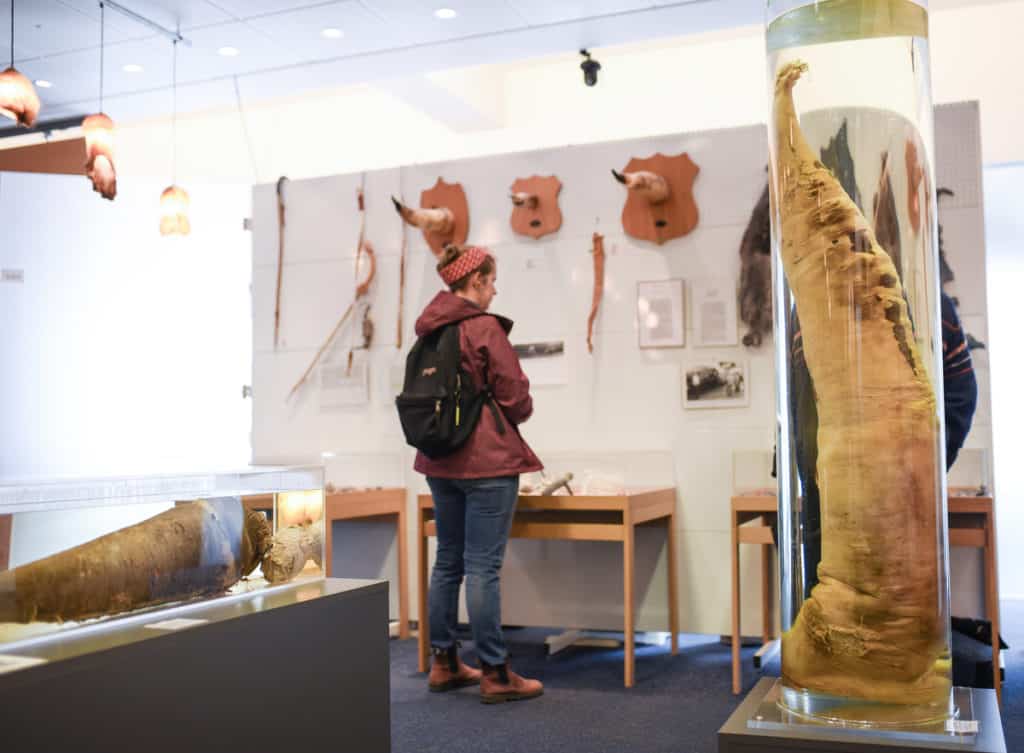
Icelandic Phallological Museum
From hot dogs to the Icelandic Phallological Museum, seems like a natural progression wouldn’t you say?! This is not a museum to visit for a hen do, as it actually offers a very scientific view into the study of phallology, although it can only be assumed that you too will experience rather a lot of wide-eyed childish giggling. I am a firm believer that you should do at least one completely odd thing on a trip to a new city, and this is certainly one of them. Tickets cost 2,200 ISK, and yes that’s an adult ticket, I assume you won’t be taking the kids to this one!
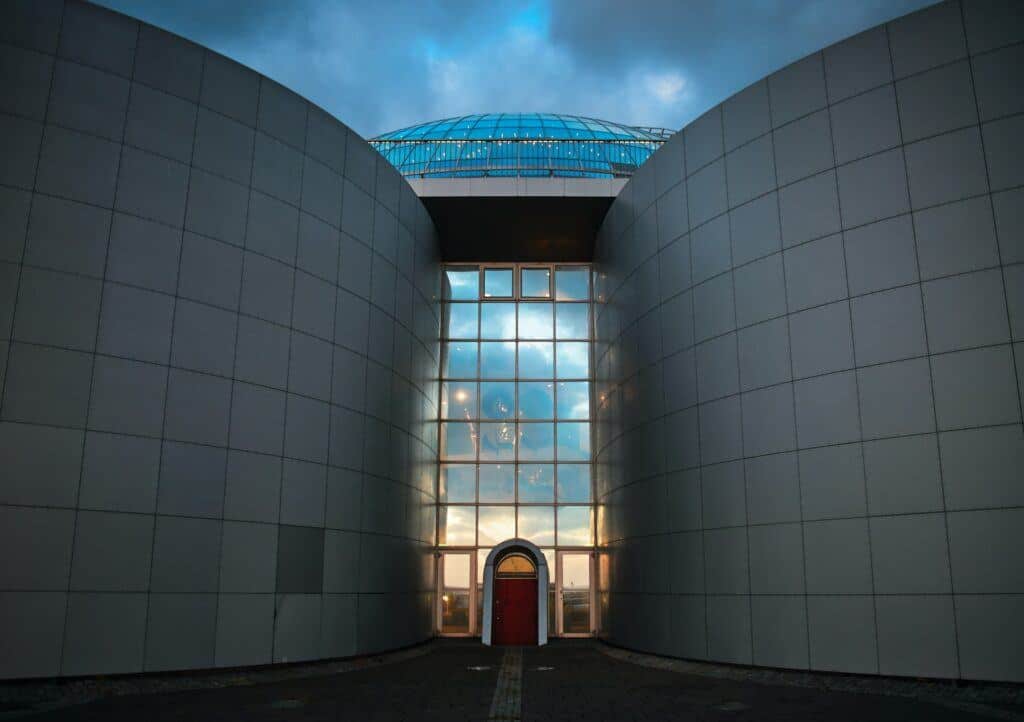
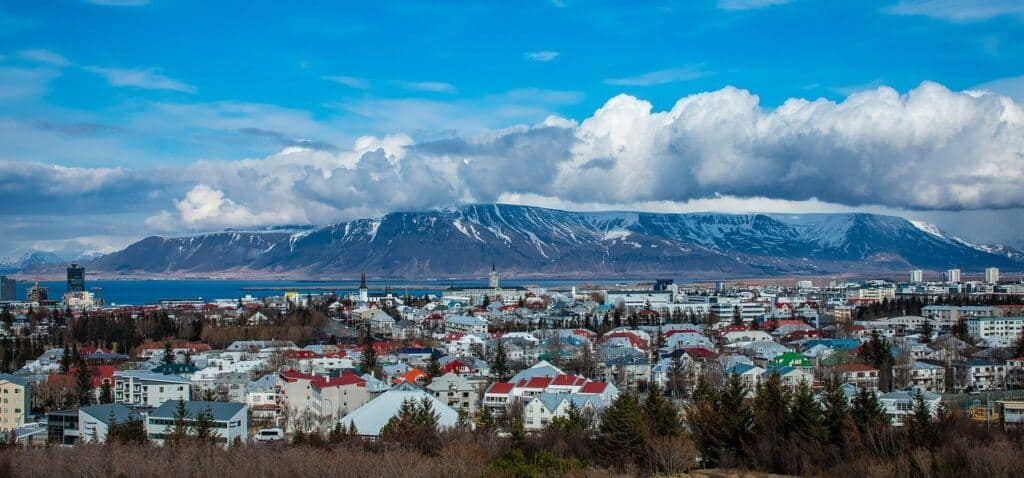
A View From Perlan
This futuristic building would look quite at home as the main structure of the cornucopia in the Hunger Games movies.
Meaning ‘the pearl’, Perlan is a museum atop of Öskjuhlíð Hillwith incredible and expansive views of the city and its stunning mountainous backdrop.
This dome shaped building is built on top of six equally distinctive water tanks and is famed for its viewing platform, museum, and art exhibitions. Entry into the Perlan Museum will set you back around 4,500 ISK, and remember to go to the 360° observation deck; it’s quite the view.

Árbæjarsafn Open-Air Museum
Árbæjarsafn, a historical open air museum in Reykjavík that gave me instant Hobbit vibes. Teeny-tiny grass roofed, classically Nordic style houses form a sort of mini village for you to explore the histories and culture of the Icelandic people. Although many of the houses host an array of somewhat creepy wax Icelandic people from the past (which frankly freaks me out enough to swiftly exit), it is still a nice way to spend an hour or so absorbing the city’s culture and traditions.
Admission to the museum is 1,800 ISK for adults and free for children aged between 0-17 years.
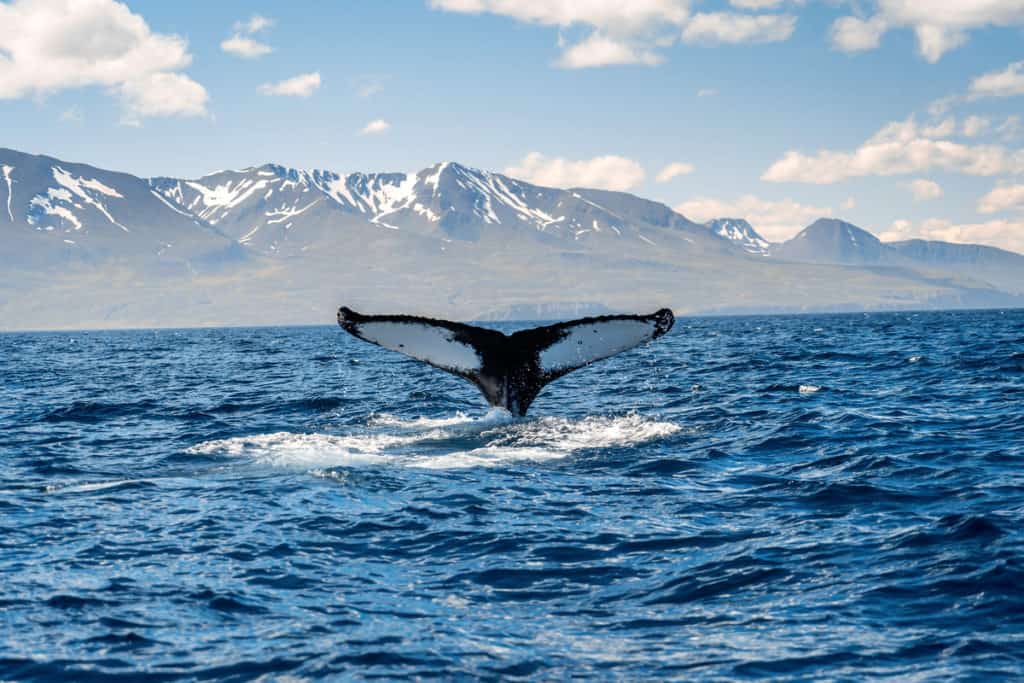
Whale-Watching is Epic
From Humpbacks to Minke whales, there’s an opportunity in Reykjavík, if you’re lucky, to see these majestic animals.
This tour leaves from Reykjavík’s old harbour at either 9 a.m. or 1 p.m. aboard the Andrea. The experience lasts 3 hours, and the boat’s deck allows for an all-encompassing view of the ocean, so keep your eyes peeled for splashes or the whistling of whales.
There was a real educational element to this tour, with a very knowledgeable guide giving us details about the whales, including showing us some of their teeth, which are more like bristles from a comb than teeth.
Apart from seeing whales, the best thing about this tour is the security of knowing that if you’re not lucky enough to see any whales then you are allowed to book another day free of charge. How great is that? Never have I been on safari and having not seen any leopards, been told you can have another free safari tomorrow! To greatly improve your chances of spotting the whales you should look at going to Reykjavík between April and September/early October.
You can book through Get Your Guide and the cost of this trip is 11,577 ISK. The downside of this tour is that it will be over before you know it and you’ll be left wishing you could spend all day with these magnificent creatures.
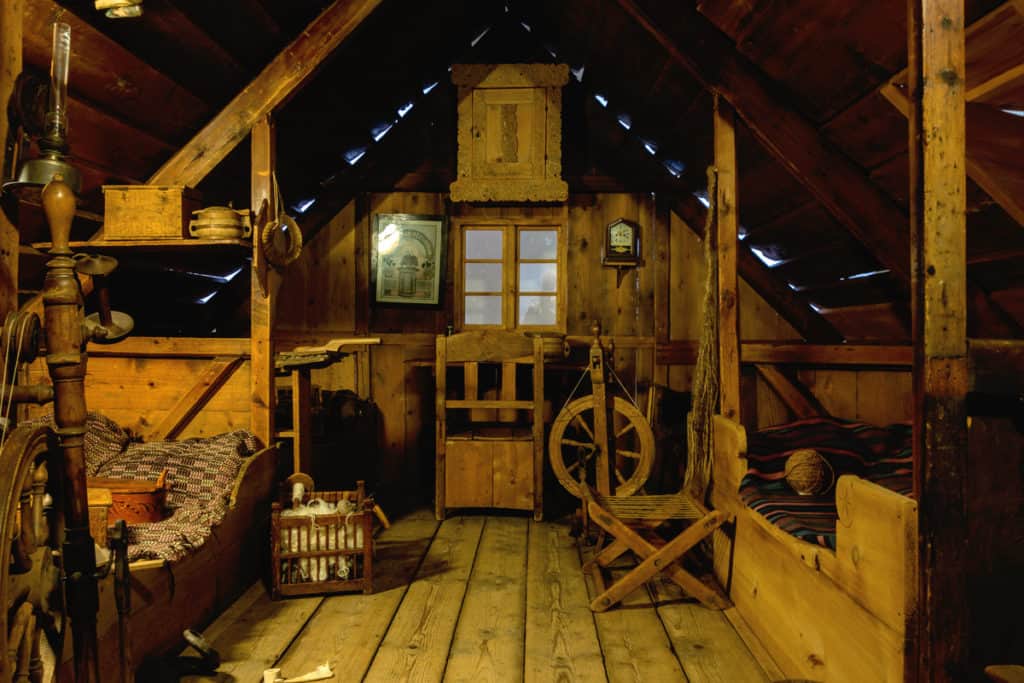
National Museum of Iceland
I don’t know about you, but I love a good museum and what better museum than the National Museum of Iceland?
You can learn in-depth about Icelandic history and culture, from their traditional Nordic roots all the way to their fight for independence.
Located at 101 Suðurgata, the National Museum is just a stone’s throw from the National Gallery of Iceland, which is also well worth a visit. Admission to the museum is 2,000 ISK for adults and free for children up to the age of 18. Students receive a discount of 1,000 ISK if they bring their student cards.
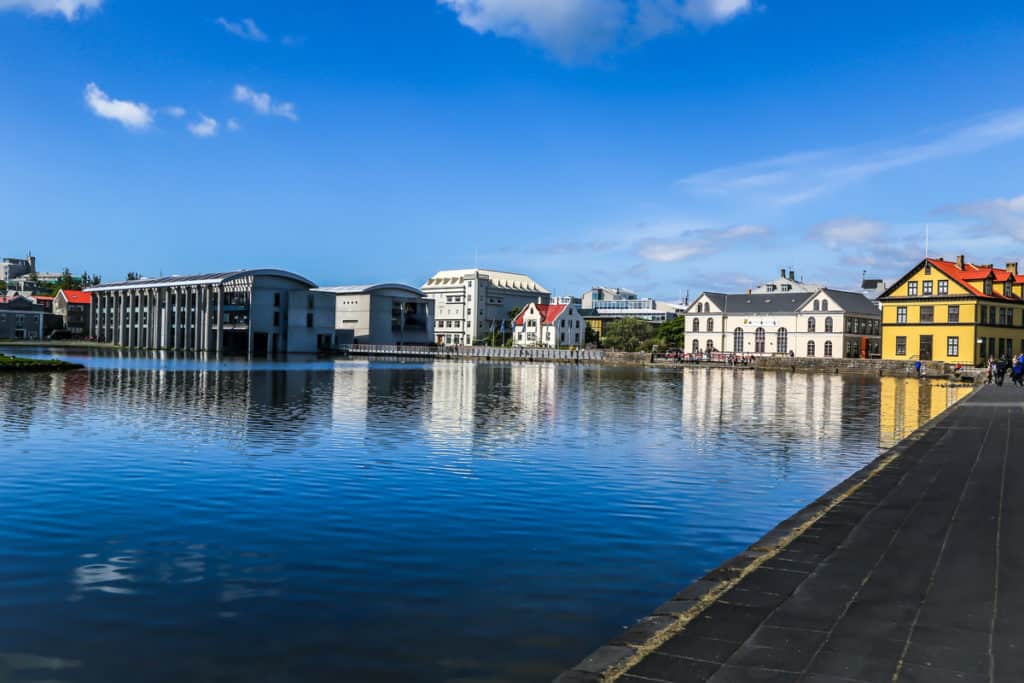
Tjörnin (The Pond)
Now Tjörnin is such a cute little spot for a picnic or a pleasant stroll. I loved this place because it provided so many different perspectives of this part of Reykjavík.
On one side, a green-roofed spired church sits quaintly by the pond and on the other side, those classic Icelandic coloured-roofed houses sit cutely side by side. You can navigate the pathways around Tjörnin and say hello to the ducks, swans and geese that call the pond their home. Be sure to fit in a visit as the sun is setting for beautiful pictures of the church with equally stunning water reflections.
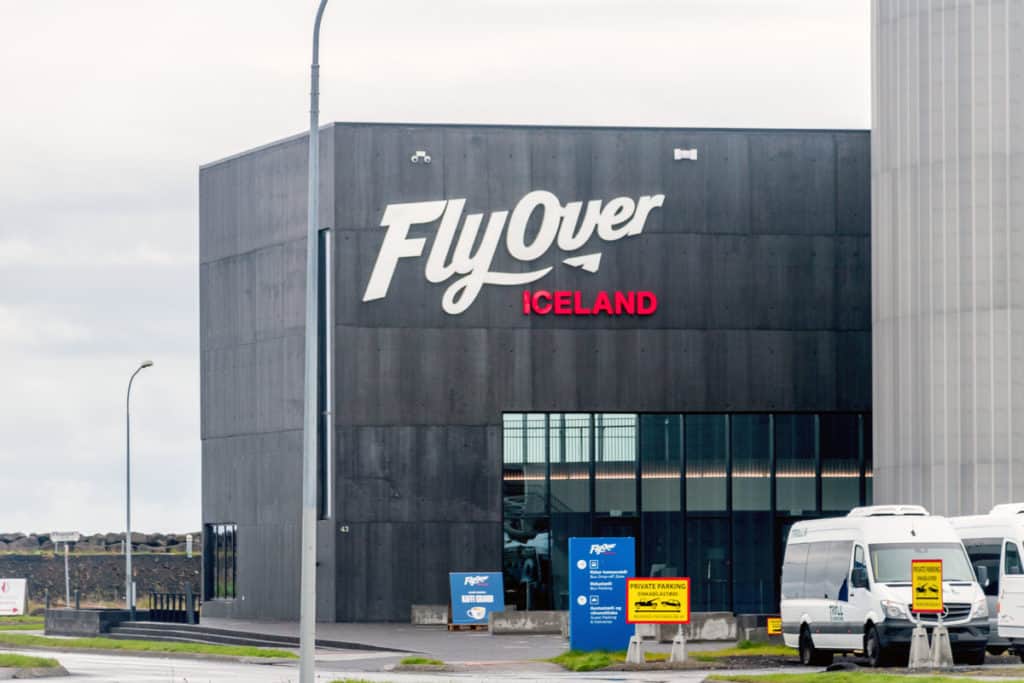
FlyOver Iceland
Although I would always recommend exploring the outdoors in person, FlyOver Iceland offers a unique virtual aerial tour of Iceland’s spectacular scenery.
If the heavens have opened and you’re at a loss of what to do, or want to entertain your young travellers, then this is great activity to try. Strapped into a rollercoaster-like seats you’ll be suspended in the air for this experience, as well as feeling the rush of the wind and an assortment of scents.
Now personally I think this experience is a little pricey but an adult ticket costs 4,490 ISK and 2,245 ISK for a child ticket.
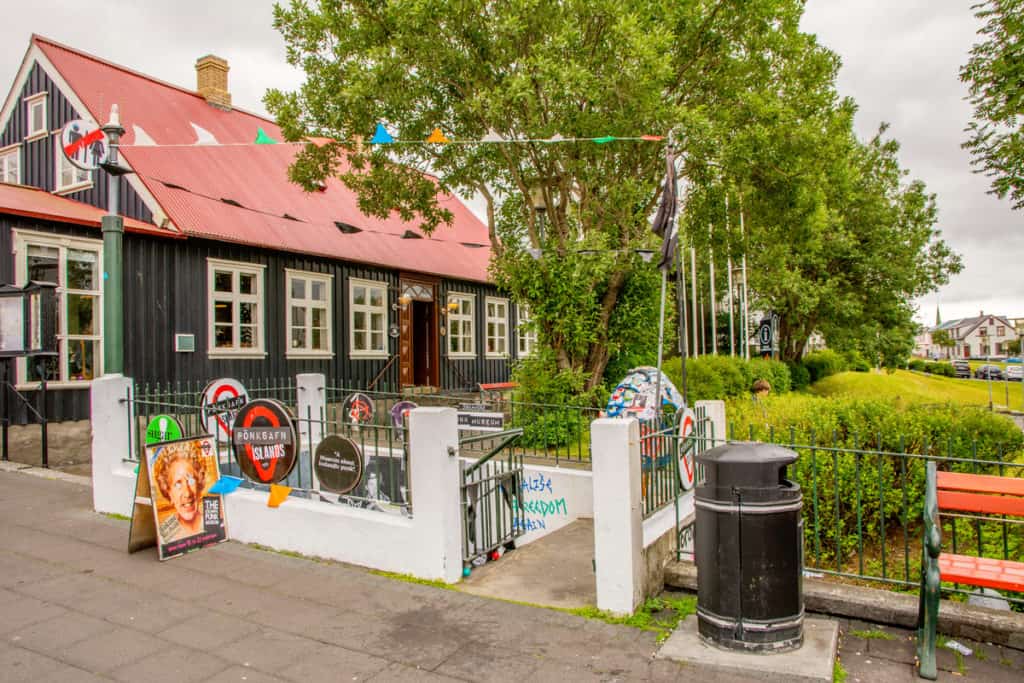
Reykjavík Punk Museum
If you’re into punk rock, the Reykjavík Punk Museum will be right up your street. And if you’re not, its still quite a fun way to while away an hour on a rainy day.
The museum is actually located in a disused public toilet — doesn’t that sound appealing!? But don’t worry, it feels sanitary inside. It’s 1,000 ISK to enter and children can visit for free. The walls are plastered with punk posters and there are even original urinals on display!
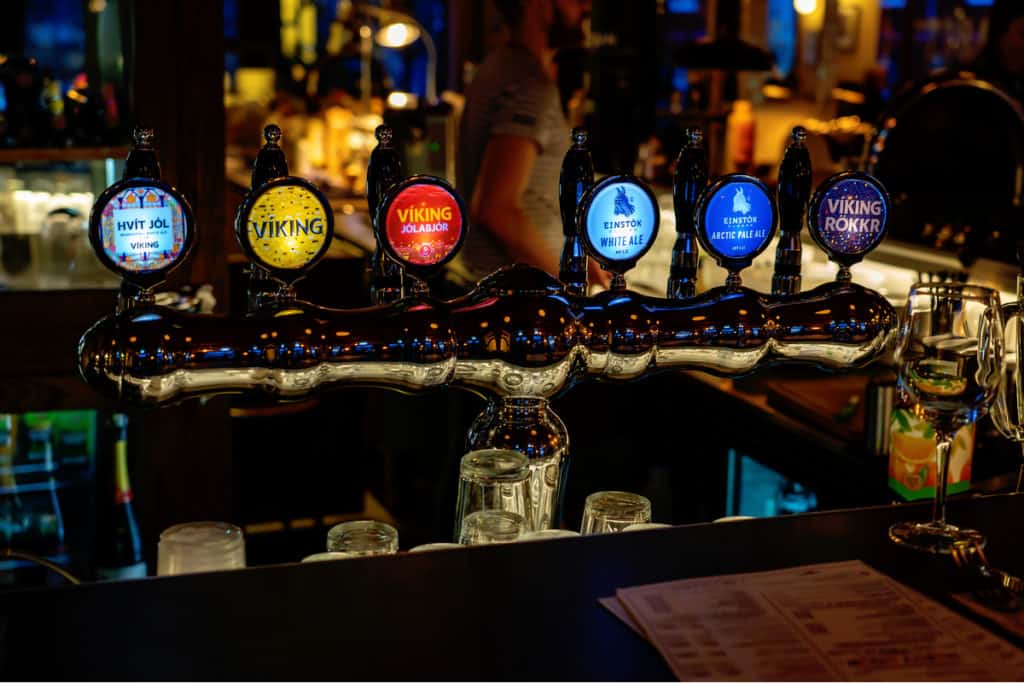
The Nightlife of Reykjavík
I must admit that when thinking of Iceland, I’m too distracted by the volcanoes and waterfalls to think too much about nightlife. But that’s not to say that nightlife doesn’t exist and thrive in Reykjavík, because it sure does. Here are just a few recommendations for some places you can go for a drink and hang with the locals.
First up is Magic Ice Reykjavík. This chilly bar is much more than just a place for a cold beverage, it also has ice sculptures, ice-art and can be enjoyed by the whole family. Located on the aforementioned Laugarvegur street you can find it at number 4-6.
Microbar is another popular choice, and one filled with a good spoonful of quirk. It’s a relatively small bar, so it’s very atmospheric and a great place to try those local brews. Microbar can be found at 2 Vesturgata street just a stone’s throw from Reykjavík’s old harbour.
Snaps Bistro Bar is another cosy place that’s best known for its evening grub and a good old drink. I firmly believe that a good food establishment can be determined by their light bulbs! Yes, lightbulbs. If there is an edgy exposed bulb anywhere in the building, its sure to be a great trendy place and some good food will surely be served.
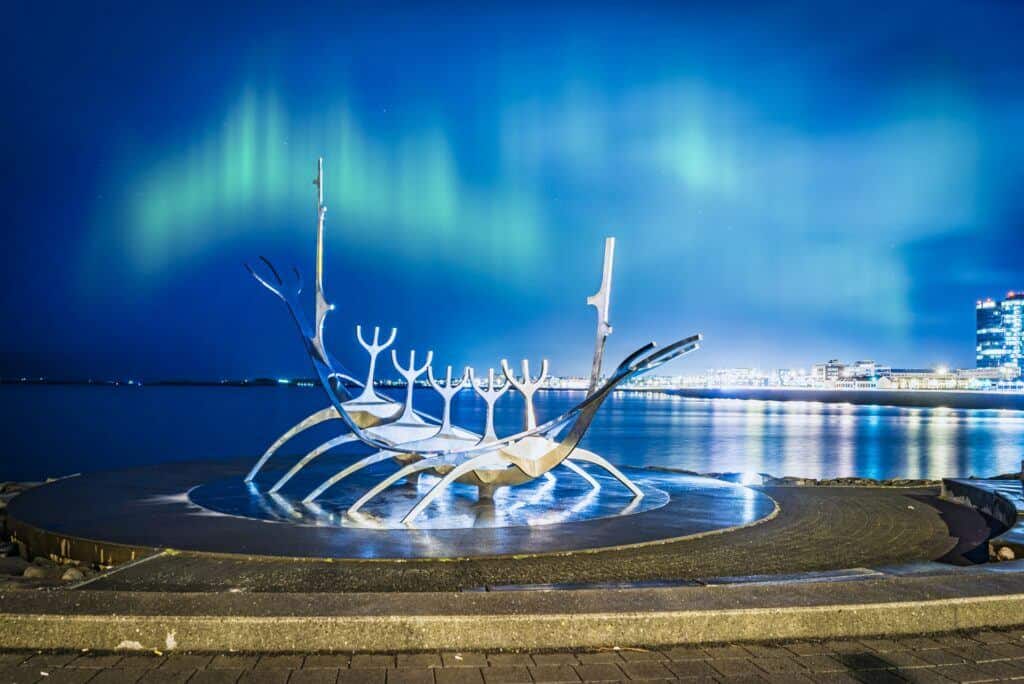
See the Northern Lights
The northern lights, or the Aurora Borealis, has to be one of the world’s most spectacular natural phenomena. You may believe you need to be tucked away in a secluded part of rural Iceland to be lucky enough to see them, but it’s totally possible to see the northern lights from Reykjavík! Reykjavík joins Nuuk (the capital of Greenland) as the only capital city where the northern lights extravaganza can be seen.
Remember Öskjuhlíð Hill, where Perlan is located? Well, this is one of the best places to be able to view the northern lights from. Close to Reykjavík, Grotta Nature Reserve is also a great viewing spot; particularly handy if you have hired a car for your time in Iceland. Just like whale watching, seeing the northern lights is all about luck and timing, and September to April is the best time to spot them, as this is when the nights are longer.
So, cross your fingers, stay up late and keep your eyes peeled for the most spectacular natural light show on earth.
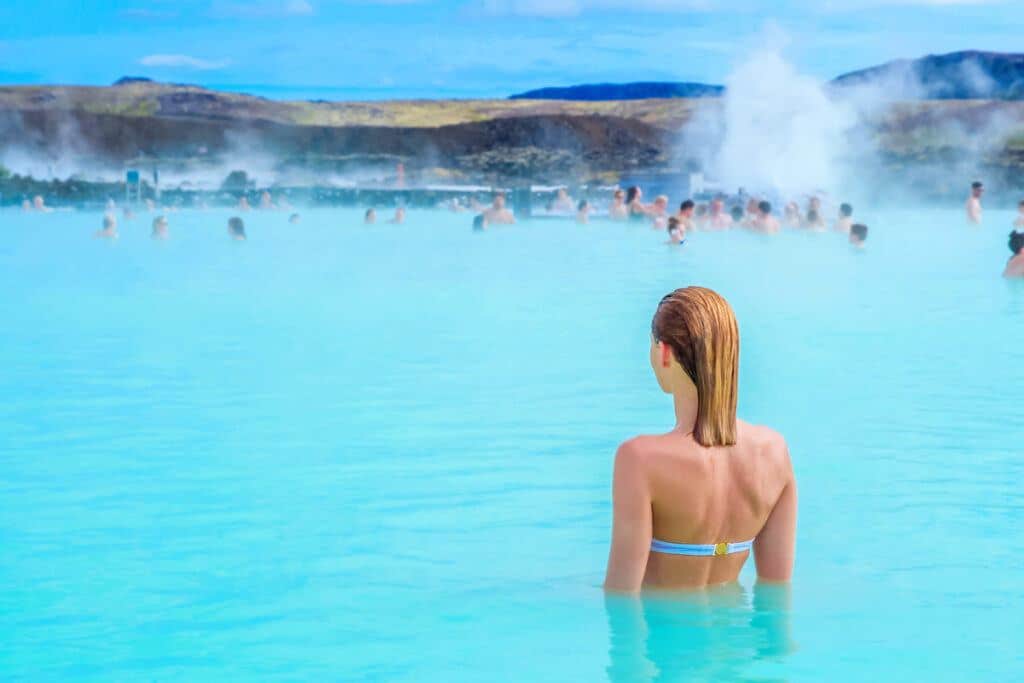
The Blue Lagoon
Another not-technically-Reykjavík must-see here, but it’s the Blue Lagoon — one of the most iconic sights of Iceland! Located just shy of 50km from Reykjavík, rarely is a traveller’s trip to the capital not supplemented with a trip to this geothermal pool.
The Blue Lagoon is a spa that’s based around the geothermal energy of a neighbouring power plant, so don’t be fooled: this turquoise pool is actually man-made, and is also not a hot spring, although many people describe it as such. Soak in the pastel blue waters, absorb that 39°C steam, and try not to drop your phone in the water as you take your selfies!
A word of warning: the Blue Lagoon has become incredibly popular, so you’ll need to book your tickets days-to-weeks in advance, depending on the season. There are a variety of packages you can choose from, with the standard package including entrance and face cream, and is priced around 6,100 ISK.
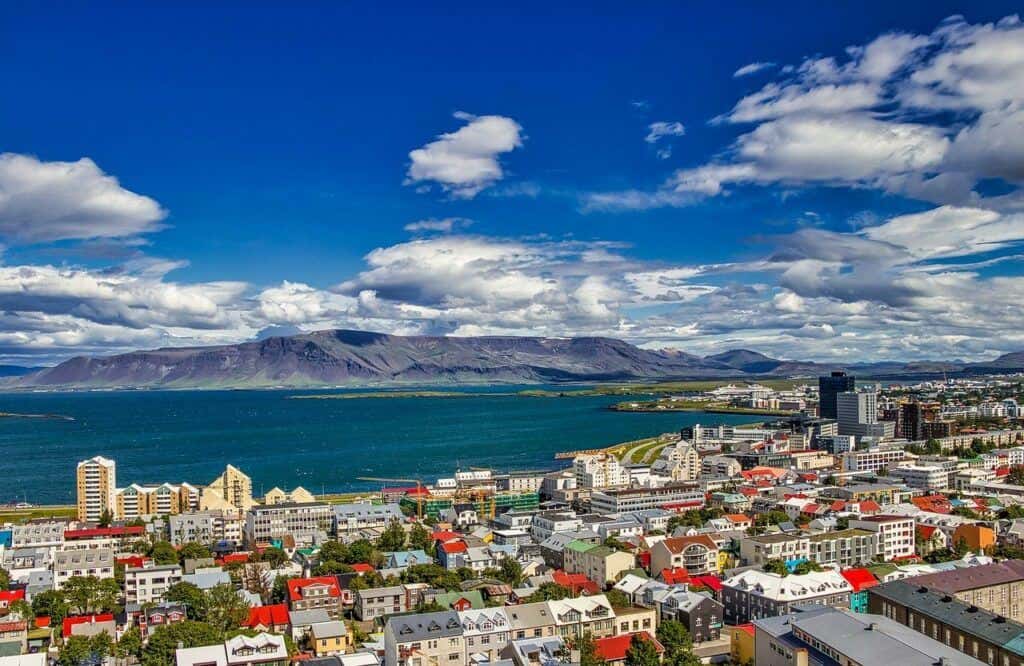
And There We Are: Weird and Wonderful Reykjavík!
Reykjavík embodies the true edgy Nordic aura found in many of these amazing Scandinavian countries and is well worth adding to your European travel list.
While, in my opinion, a trip to Iceland is not complete without venturing along the south coast and exploring the waterfalls, volcanoes, and basalt beaches, it is equally not complete without exploring the country’s capital.
From volcanic excursions to gothic churches, modern museums and delicious hot dogs, Reykjavík is a perfect place for a city break or to explore for a few days before you venture across the rest of Iceland. Although a capital city, Reykjavík really does feel more like a town. And the comfort of a town-like atmosphere makes for a more pleasurable and local experience, allowing you to truly get to know the city.
Reykjavík can be visited in both the summer (June to August) and winter months. I personally visited in the “summer”, and although you certainly need to pack a warm coat the temperatures are much more bearable and the days far longer. More daylight hours equals more exploring, right? Although if ticking off the northern lights is your main priority, I would suggest it’s better to visit between September and April. Or better still make two trips in one year!
I cannot wait to return to discover more that Iceland and its capital, Reykjavík have to offer.
Related Articles on Iceland
🇮🇸 The Cost of Travel in Iceland: A 2023 Budget Breakdown
❄️ 22 Mind-Blowing Things to Do in Iceland

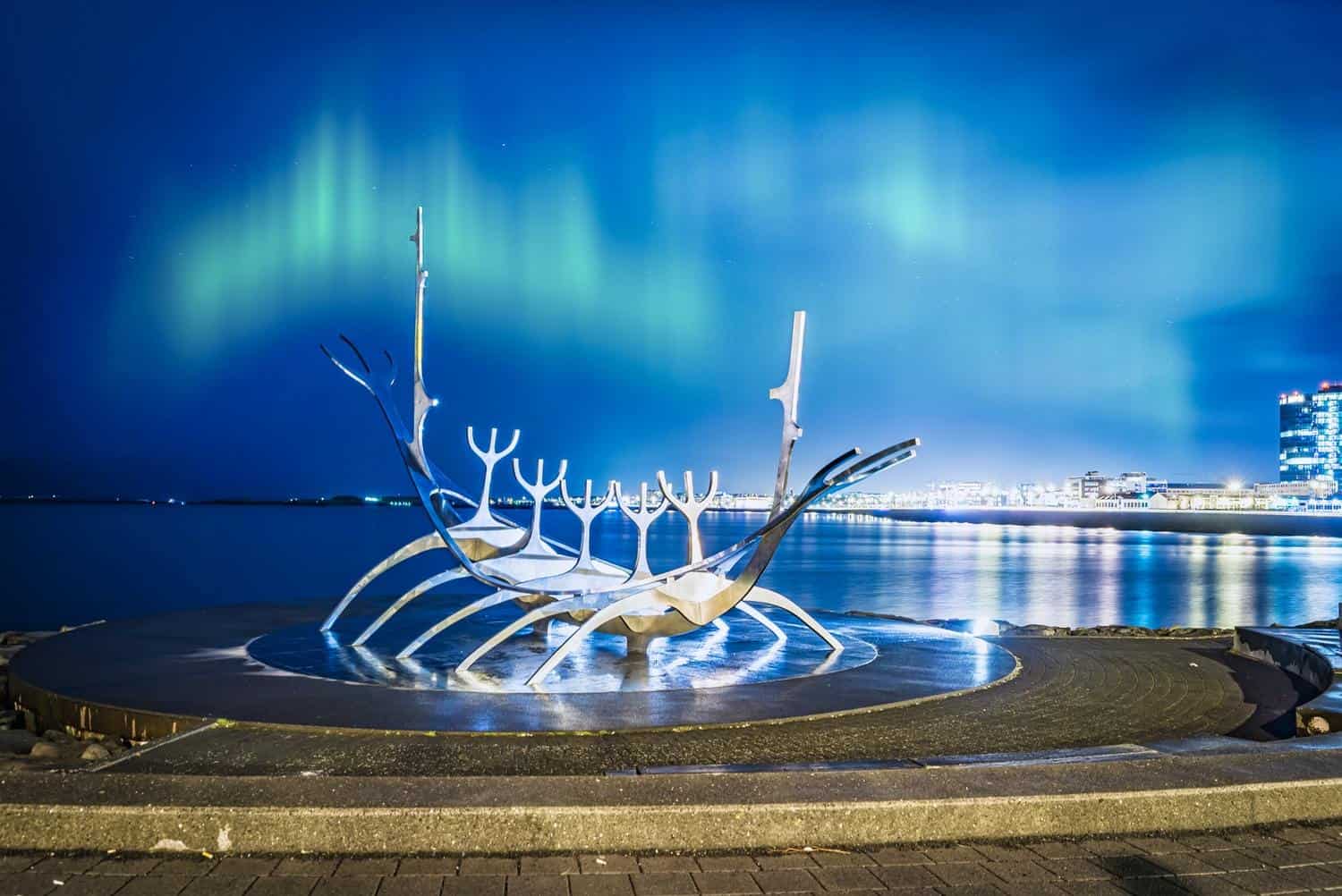


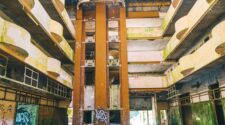
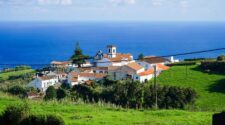
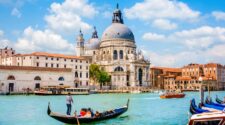

No Comment